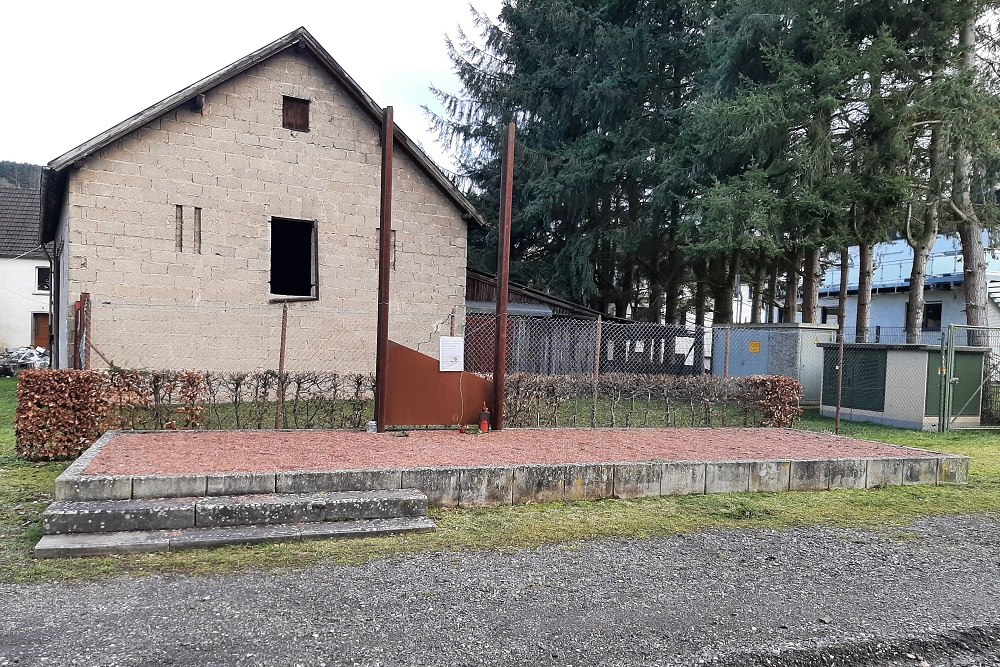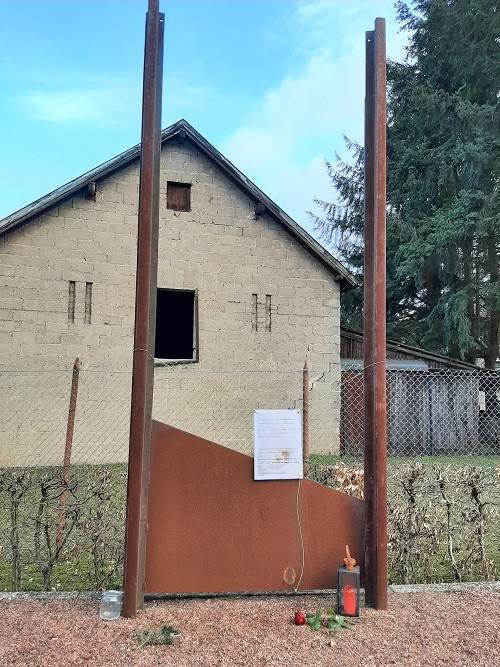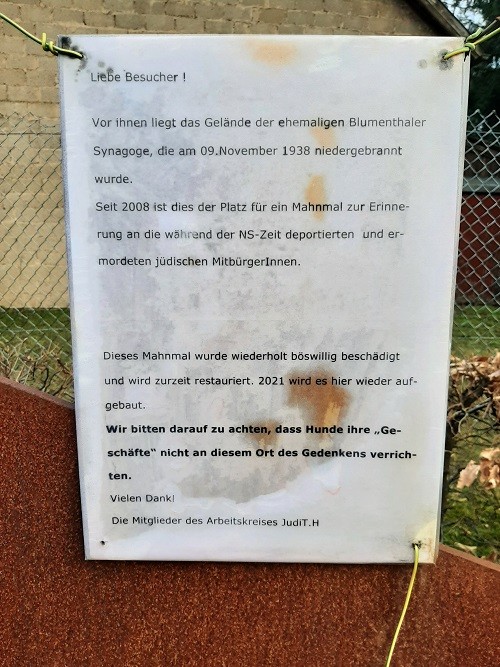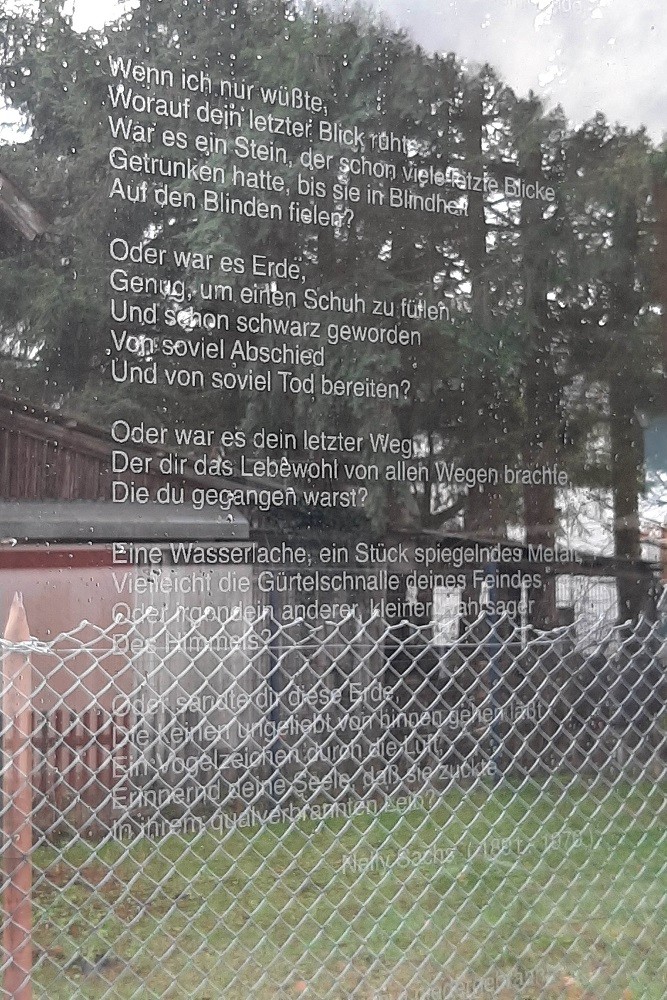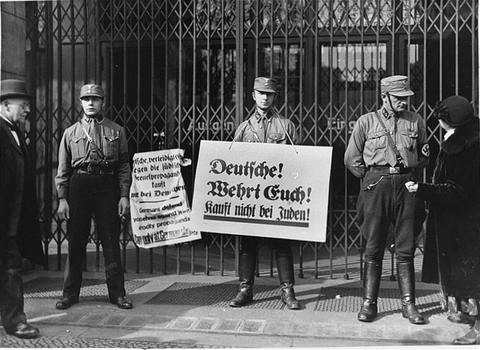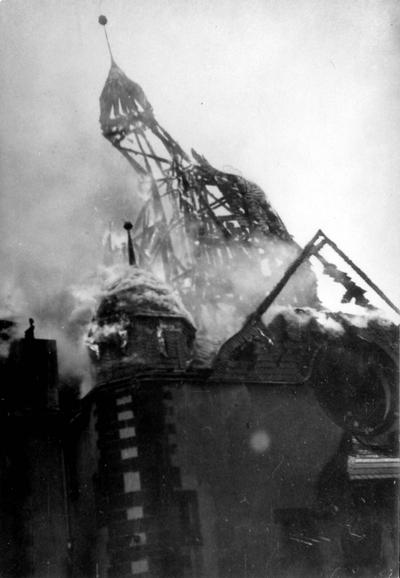Synagogue Blumenthal
The Blumenthal Synagogue, inaugurated in 1904, was considered one of the most beautiful and largest in the Eifel. In 1938 fell victim to the November pogroms and the ruins were almost completely demolished and leveled in 1942.
The first Jews settled in Hellenthal and surrounding villages towards the end of the 17th century and the beginning of the 18th century. The community grew considerably during the 19th century and peaked around 1900. The Jews of the Hellenthal region earned their living mainly as cattle traders and butchers, but also as manufacturers and textile traders.
Religious services were mainly held in locker rooms in private houses.
A new synagogue was opened in Blumenthal on August 5, 1904; it was the largest synagogue building in the Eifel.
After the National Socialists came to power in 1933, the synagogue in Blumenthal was the target of anti-Semitic terror. The outside walls were smeared with Nazi slogans and windows were smashed.
In the night of 9 to 10 November 1938, the Nazis, including the mayor of Hellenthal, set fire to the Blumenthal synagogue building. All Jewish residents of Blumenthal and Hellenthal were arrested. In front of the destroyed synagogue, the arrested men had to take off their hats and bow to the SS and SA men present! Most of the Jewish men were put "into protective custody" and were then taken to Sachsenhausen concentration camp.
After the destruction, the building rubble remained on the site until 1942, after which the ruin was completely cleared up.
The memorial was inaugurated in 2008 near the former site of the Blumenthal Synagogue. The monument consists of the central stele of two upright railway lines. In between is a glass plate on which a prayer by the German Jewish author Nelly Sachs is printed.
As soon as it was founded in November 2008, a stone was thrown against the glass and shattered as a result. When this happened again shortly after renewing the glass, the initiators of the group "JUDIT". H' (working group: History of the Jews in the Valley, Hellenthal) decided to repair the damage as a political sign. A second glass plate was glued to the fragmented old one.
Do you have more information about this location? Inform us!
Source
- Text: TracesOfWar
- Photos: Hans Tasma
Related books
Nearby
Museum
Point of interest
- Register Victims Reifferscheid - Reifferscheid (Hellenthal)
- Gestapo Headquarters - Schleiden
- Former Ski Jump "Adolf Hitler" - Hollerath (Hellenthal)
Monument
- War Memorial Blumenthal - Blumenthal (Hellenthal)
- Memorial War Victims Oberhausen-Schleiden - Oberhausen-Schleiden
- War Memorial Hellenthal - Hellenthal
Cemetery
- German War Grave Blumenthal - Blumenthal (Hellenthal)
- Jewish Cemetery Blumenthal - Blumenthal (Hellenthal)
- German War Grave Reifferscheid - Reifferscheid (Hellenthal)
Remembrance Stone
- Stumbling Stone Alte Schulstraße 8 - Hellenthal
- Stumbling Stones Im Kirschseiffen 31 - Hellenthal
- Stumbling Stones Im Kirschseiffen 31 - Hellenthal
Fortification
- Remains Bunker Schleiden - Schleiden
- Remains Bunker Schleiden - Schleiden
- German Waterbunker Hollerath - Hollerath (Hellenthal)
